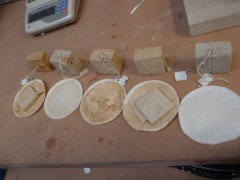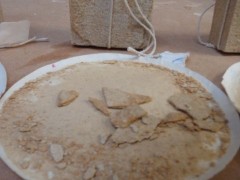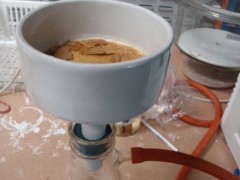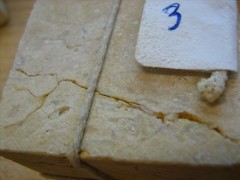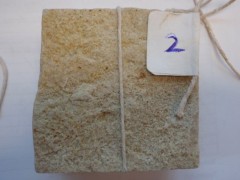Salt Attack
What is Salt attack?
Salt attack is the damage that is caused by salt residue that is left behind and crystalises in the pores of materials such as stones and other masonry materials, the salt is transferred through water that may be carried in the various surrounds of the material. When the water is evaporated through dryer surroundings the salt residuals are deposited in the pores of the masonry material. Overtime this reoccurrence of wetting and drying of the pores cause a slow increase of salt in the pores and capillaries of the material resulting in a more concentrated salt remnant. It is at this time when the crystals will form. As the crystals grow, granules from the masonry will expand, thus exerting internal forces and stresses. The internal forces that the salt crystals exert may lead to eventual damage to the stone or masonry material.
Why the need for a salt attack test?
Masonry units, segmental pavers and stone pavers are a few of the common materials employed for use in the built environment; they are used for their durability, low maintenance and aesthetics. However, none of these materials are entirely salt safe with their exposure perhaps left disregarded in daily life, for instance an area may be repetitively exposed to sea spray in coastal regions yet the area subjected to the sea spray that may be hundreds of meters away. Salt water swimming pools are another example of places that contain stone and masonry pavers that are subject to the repetitive soaking and drying in salty water. The degree of damage caused by salt attack, depending on several variables such as the nature of the masonry, the type of salt it is exposed to, the severity of the salt attack and the period of time that the masonry has been in its state, can range from chipping, exfoliation of surfaces and efflorescence damage to cavitation, crumbling and cracking to the complete disintegration of the material, these effects may lead to expensive and time consuming rectification actions.
Testing to AS/NZS 4456.10 Determination of Resistance to Salt Attack
Safe environments is able to determine the resistance of stone and other masonry materials to salt attack. Stones and other masonry units are tested according to two different methods of the AS/NZS 4456.10:2003, both of these test methods essentially subject the materials to cycles of soaking in salt solution and then a period of drying. During these periods of wetting and drying crystals that were dissolved in the salt solution attach themselves to the small pits within the stone; these crystals grow as the stone is subjected to drying and wetting again. Throughout this repetitive soaking and drying procedure the stones resistance to the salt attack is determined, flaws or change in the appearance of the material and loss in weight of the stone is recorded.
Samples of stone or other masonry material can be sent to Safe Environments, the stones or masonry units should be:
- 5 separate units
- Each unit should be a cube with sides being 50±2mm in length
- The surfaces and edges of the cubes should be smooth and free from chips and ribs.

